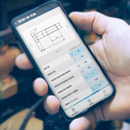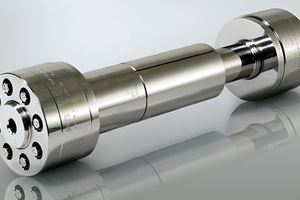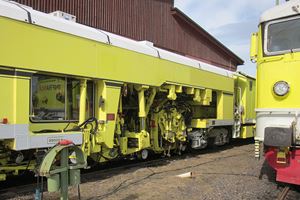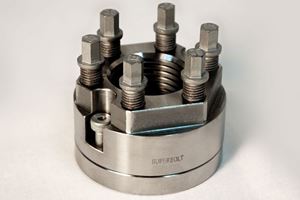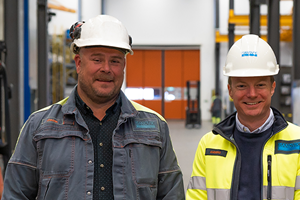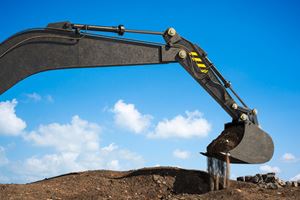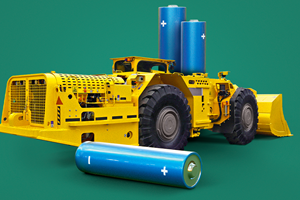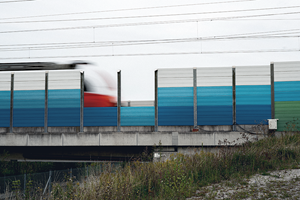
Designing for a safer world
How reliability helps engineers balance competing demands.
Natural disasters will likely be seen as defining features of the 21st century. From heatwaves in Australia to wildfires in the western United States, hurricanes in the Caribbean, and floods in South East Asia, the impact on humanity is grim. And it can potentially be worsened by unreliable buildings, installations and infrastructure.
Structural and mechanical engineers need to plan for these kinds of unexpected events but, at the same time, face demands for cheaper, lighter and quieter products. Can we realistically expect engineers to find a space for reliability in the middle of these pressures?
It is essential to take a step back and understand that there is nothing new about engineers facing conflicting requirements. Demands may appear to be
greater than ever, but this is not necessarily a dramatic change.
Better, faster, cheaper
Fred Schenkelberg is a reliability engineer and consultant, who has spent over 20 years working with and teaching about reliability. As he explains, this situation is not such a radical departure. “‘I want it better, faster, cheaper!’ That has never changed. However, you could argue that it has accelerated.”
“But that’s the art of engineering: to make trade-offs and meet competing needs.”
“A design team will likely have a cost target, a date that they want to launch the product and functionality goals. These get a lot of measurement and priority during the design process. As a reliability professional, I want to make sure that the consideration of reliability performance is also visible at all stages of design.”
One of the ways in which this visibility has been encouraged is through Design for Reliability, which brings together many of the tools and methodologies developed in reliability engineering.
Reliability throughout the life cycle
Design for Reliability (DfR) is a stepwise process to support reliability throughout the entire life cycle of a product, from conception to obsolescence. This means that DfR is not the exclusive remit of reliability professionals. Devised and applied at an organizational level, it guides the design, manufacturing and maintenance of a product, so it can potentially involve every part of a company.
If there is a fundamental principle that underpins DfR, it is that reliability occurs at the point of decision. With that in mind, reliability must be taken into consideration long before physical production takes place.
To do this, you need to have a good understanding of what reliability is. In mechanical engineering, reliability is the probability of an item performing its intended function for a specific period in specific conditions.
Equipped with this general understanding of reliability, you can then identify and define the reliability requirements of your product – these are likely to be similar or identical to your customers' expectations. Only once the requirements are clear, should you begin designing a product that can meet them.
Not a one size fits all
There is no universally accepted model for DfR, but any outline is likely to involve the following basic steps illustrated in the chart aside.
However, is not a one-way process. It is expected that the design, analyze and verify stages are repeatedly revisited before the product is fit to be sent to market. Within these stages, there can be any number of tools, tests and processes that uncover the product's vulnerabilities, tolerances and robustness. Schenkelberg provides a concise summary of DfR:
“It is a set of rules, guidelines and activities that enable the people making decisions — the technicians, the engineers, the managers — to understand the ramifications of reliability fully.”
“But it’s not a fixed set of tools or activities. Every situation, product, and application is different.”
Stepping back to add value
These differences are crucial because treating DfR as a box-ticking exercise can lead to problems. “One trap is for organizations to say, ‘Our last product was really good. It met our reliability expectations and our customers' expectations, so let's do everything we did last time.’ That's dangerous because the next product might have different applications, a different aim, and could be for a different customer,” Schenkelberg explains.
“You can end up with a checklist mentality: ‘We’ll do these two tests, we’ll vibrate it for 2 hours, and then we’re done.’
But are you actually adding value by doing that? You have to step back and think about what tests are going to uncover possible problems that might occur in the future.” And to uncover future problems, you may have to do something that designers often avoid – embrace failure.
The benefits of failure
Testing a product to the point of failure can be a useful tool for investigating reliability. However, it is an approach that can clash with typical design principles.
“Designers and engineers usually design away from failure – that’s often in their mind during the process of creating an item.” Schenkelberg says, and continues:
“What reliability engineering can do, is make failure more visible.”
“It’s important to have the ability to learn from failure. Too many people want to do a test to show that a product works. They run tests in conditions where they’re expected to pass but if you’re trying to find out something you don’t already know, then you really need to run it to failure.”
“That way, you find out the nature of the failure, how it manifested itself, and what sets of stresses combine to create that failure. There are different ways to do it, but you have to be willing to look for failures.”
One way of drawing out potential failures is through a highly accelerated life test (HALT) . You can use it as part of the verify and validate stage of DfR.
Understanding the true reliability
“I like to think of HALT as a discovery process,” Schenkelberg says. “You use a range of different stresses that are meaningful for your application, and you step up stresses until you force it to fail. You learn if the product is failing at the stress level you expect, and you can make decisions about the margins based on that. Just as importantly, you also learn about the nature of the failure: how it failed.”
Academics and practitioners have drawn up lists of the potential stresses that buildings, installations, and infrastructure may face as a result of climate change and other catastrophic events. Although these events make new demands on engineers, the thing that changes is the magnitude and combination of stresses that they will face.
By seeking out failures, as Schenkelberg suggests, you can understand the true reliability and robustness of your product and have a fuller understanding of its capacity to withstand unexpected events.
Designing reliable bolted joints with Nord-Lock Group
Discovering potential sources of failure is one of many testing procedures that Nord-Lock Group do, explains Cyril Cadoux, technical manager for the Europe region.
“For a bolted connection, we rarely run tests to failure, because we have the right knowledge to determine root cause from damaged parts. Simply looking at the first thousands of cycles gives us the right indication on the trends. It gives us the knowledge and confidence in our products’ reliability to offer a lifetime warranty,” he says.
“But it’s not enough for us to look at our products in isolation and confirm that they’re robust and reliable. We test our bolts and washers in the environments where they are used.”
“We talk to our customers, find out the applications and do a more in-depth analysis based on that. We get as much data as we can from them, then reproduce scenarios. Sometimes you can't get everything from 3D drawings or plans, so where necessary we visit their workplaces in person.”
“It means that we're not just testing Nord-Lock products but are actually testing their bolted connections. We can bring our analysis and simulation, our internal tools, to advise our customers properly,” concludes Cadoux.
Curious to learn more? Read our white paper on the design principles behind safe bolted connections at www.nord-lock.com/safe-bolts

